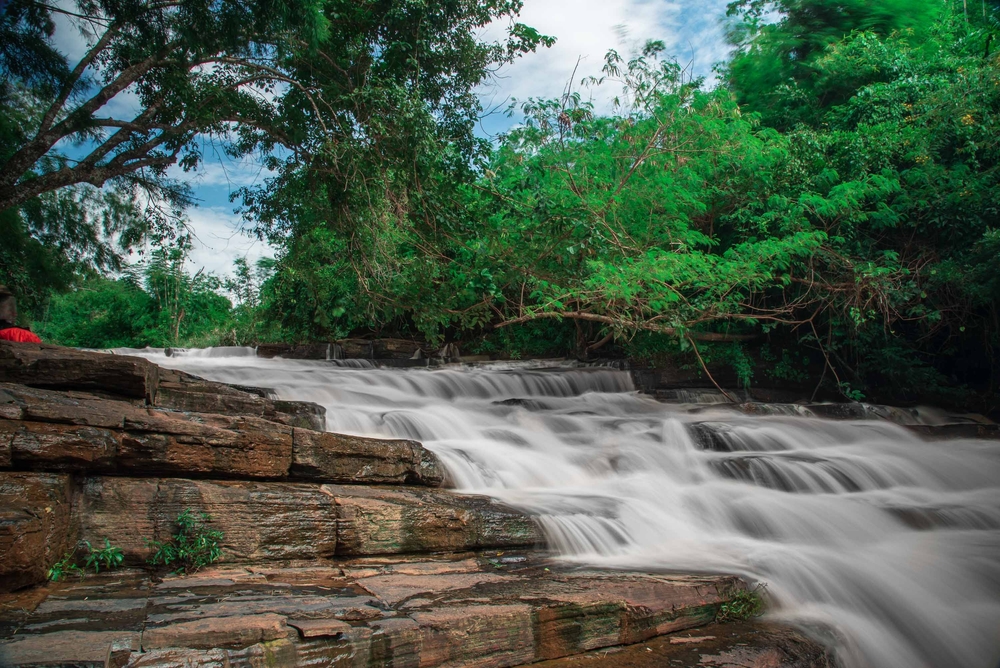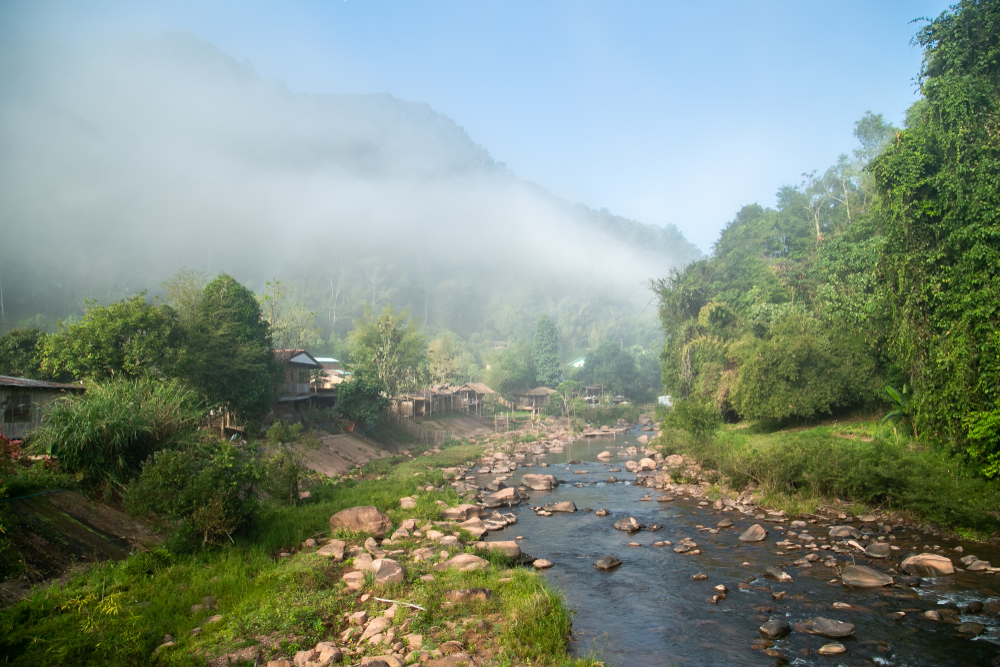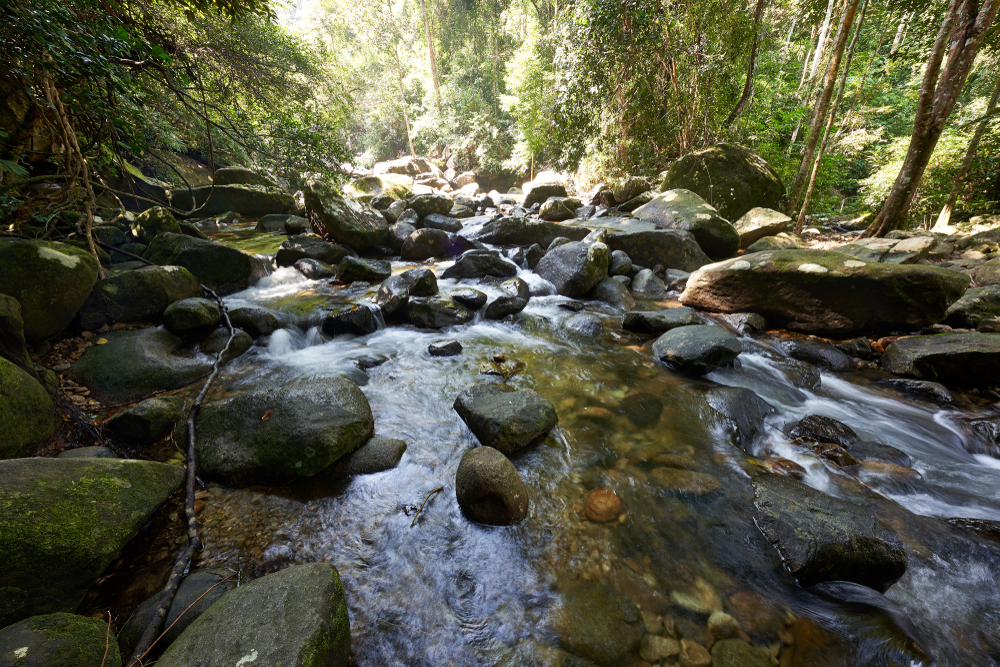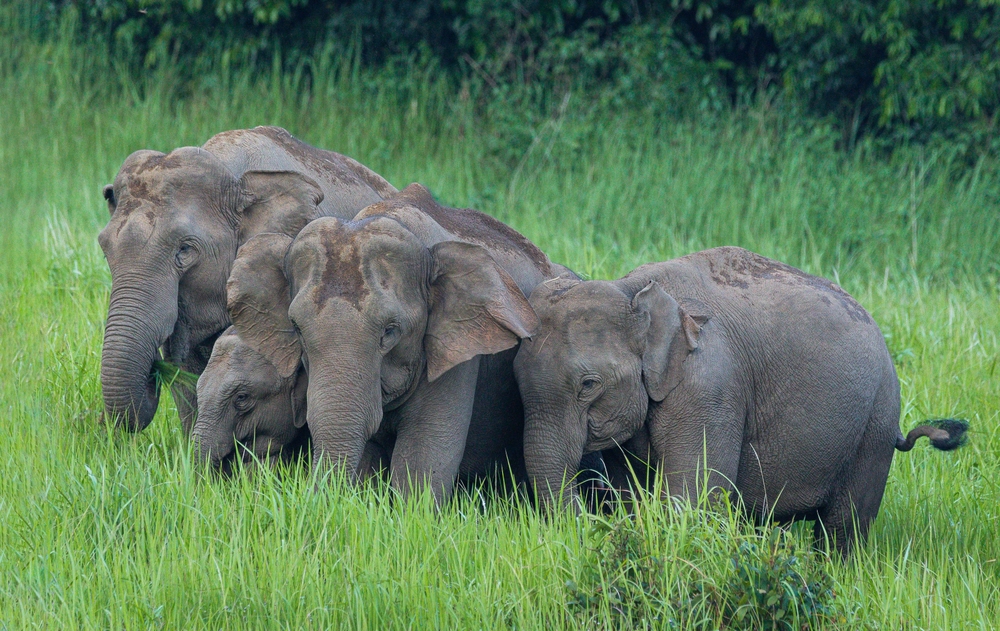Nam Nao Overview
Nam Nao National Park, or อุทยานแห่งชาติน้ำหนาว in Thai, is one of Thailand’s most captivating natural reserves, sprawling over an impressive 386 square miles (1,000 square kilometers). Located in Phetchabun Province in northern Thailand, the park lies within the Phetchabun mountain range and is celebrated for its diverse ecosystems, breathtaking landscapes, and pristine wilderness.
The park’s terrain is a striking blend of undulating hills, towering limestone peaks, and deep valleys. Much of Nam Nao is blanketed in dense evergreen forests, mixed deciduous woods, and rolling grasslands. One of its most prominent features is Phu Kum Khao, a high plateau offering stunning panoramic views of the surrounding forests.
The climate, marked by cool winters and temperate summers, makes it an excellent habitat for a wide variety of flora and fauna. Visitors often marvel at the abundance of bamboo groves, ferns, and wildflowers that dot the landscape, particularly during the cooler months.
Nam Nao is a haven for wildlife enthusiasts, hosting an impressive array of animal species. Among the mammals, Asian elephants, leopards, and sambar deer are some of the park’s most notable inhabitants. The elusive clouded leopard is also rumored to roam the area, adding to the sense of mystery and allure.
The park is equally famous for its avian population, attracting bird watchers from around the globe. The great hornbill, green peafowl, and various species of kingfishers are just a few highlights among the 200 recorded bird species. Reptiles and amphibians, including the Siamese pit viper and various species of frogs, further enrich the park’s biodiversity.
Nam Nao’s popularity stems not only from its natural beauty but also from its many attractions. The Sai Thong and Kaeng Wong waterfalls are particularly enchanting, with their cascades glistening in the sunlight.
The park also features intriguing limestone caves, such as Tham Pha Hong, known for its stalactites and stalagmites. Trails like the Phu Phan Noi nature trail are well-loved by hikers for their serene pathways through dense forests. Camping sites and observation towers offer opportunities for night-time wildlife spotting and stargazing.
Visitors can engage with Nam Nao through various activities, including trekking, bird watching, and photography. The park’s well-maintained trails cater to both novice and experienced hikers. Camping is a popular way to experience the park’s tranquil atmosphere, especially during the cool season when temperatures can dip to near freezing.
The park faces challenges in balancing conservation and visitor access. Illegal logging and poaching have historically threatened its ecosystems, but increased patrolling and community engagement programs have significantly improved the situation. Nam Nao’s management also focuses on reforestation and wildlife rehabilitation, contributing to the park’s ecological recovery.

















































































